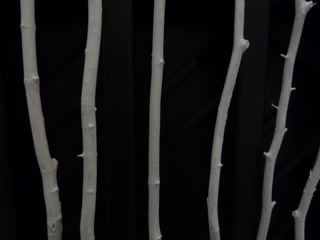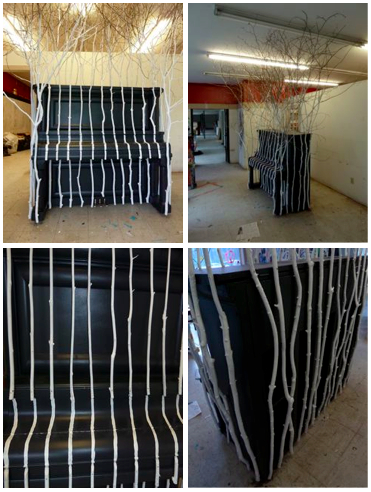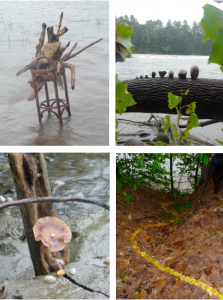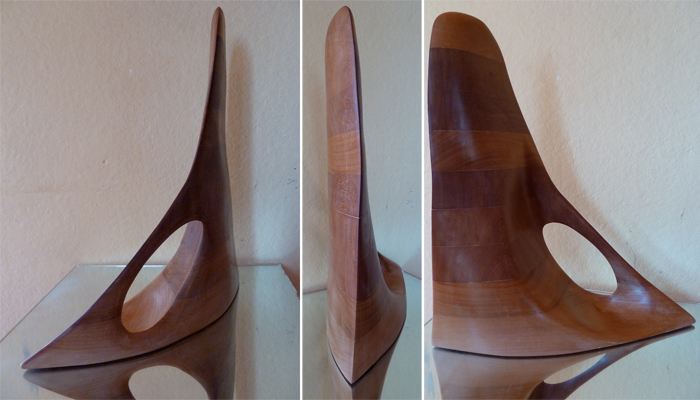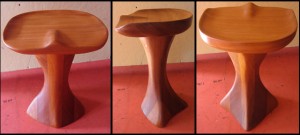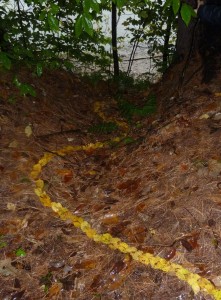
Art in nature piece by Dominic Stucker
By guest writer, Dominic Stucker, Program Manager at Sustainability Leaders Network. Based on participation in several of my art in nature workshops, Dominic offers these reflections.
Systems thinking and creativity are essential for bringing about the transition to sustainability. Systems thinking helps us assemble diverse stakeholders to better understand the integrated economic, social, and environmental systems we seek to change. Creativity and art help us gain clarity in vision and tap into the breakthrough thinking necessary for innovating a new reality, a new relationship between people and planet. Fortunately, these leadership skills are mutually reinforcing, especially through making art in nature.
Immersing ourselves in nature, sitting quietly, eyes opened, eyes closed, we can hone our skills of observation, noticing patterns and processes that have evolved over millennia. Using all our senses, we can experience and learn from nature. Perhaps we see the streams, brooks, and river in a basin, noticing nature’s nested hierarchies. Or we reflect on the larger water cycle, a process that, instead of linear and polluting, is cyclical and cleansing. Gazing skyward from a soft bed of pine needles, we can observe the forest’s resilience in flexibility, trees swaying in the wind. Or we smell the pungent soil, part of annual cycle that returns sustenance to the trees’ roots. Perhaps we see the genius in a flower, tracking the sun and folding its petals at dusk; or in the capacity of a cactus to store water; or in the design of a feather. We can learn from and co-create with these natural systems.
I have had the privilege and joy of participating in several Art of Sustainability sessions with Vermont artist and educator, Jay Mead. Two that stand out were along the Housatonic River in rural Connecticut and along a wild part of the Connecticut River in Vermont. Jay invites participants to see nature anew through quiet observation, sensing, and play. The invitation includes being fully present, setting aside transient to do lists and deep-seated preconceptions about how the world works. Participants are asked to start from a place of unknowing – playful for some, meditative for others – being open for deeper wisdom to emerge.
Click here to read full post.

